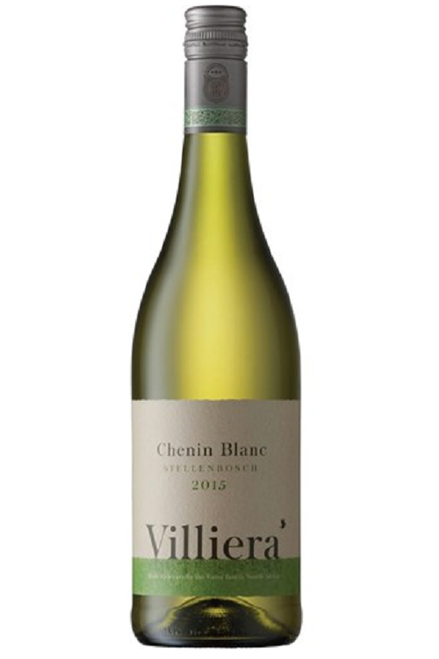Chenin Blanc. Versatile super star or minor league player?
I recently wrote an article entitled “What is a “Noble Grape Variety?” Are all the others ignoble?” In this article I mentioned the grape varieties considered “noble” even though there is no absolute consensus. I stated that one of the whites, along with Chardonnay, Riesling, Sauvignon Blanc and Semillon, is Chenin Blanc. Just to remind you, I wrote that the generally accepted attributes for a variety to be considered noble are as follows:
- They are capable of being made into excellent wine
- They demonstrate their distinctive varietal character wherever they are planted in the world
- They are generally capable of moderate aging
- They retain varietal character with moderate aging
Judged by the above criteria, Chenin Blanc is certainly noble. So why has it been disrespected or overlooked in so many parts of the world? The answers are not easy to isolate. It appears to be a mixture of factors. Let me be categorical at the outset, Chenin Blanc is a fabulous variety, capable of myriad expressions. From a quality potential perspective, Chenin Blanc is undeniable and so potential quality cannot be a reason. Perhaps Chenin Blanc has been planted in the wrong places in many regions or not made with passion and commitment? This is one reason. Just here in California, with one exception, Chenin Blanc is just starting to earn some grudging respect. There has been a steady decrease in plantings and there is now very little planted in our best AVA’s such as Napa and Sonoma. The exception is Sacramento’s Clarksburg AVA, which has made a specialty of Chenin and produces excellent wines at reasonable prices. In certain terroirs, Chenin can over produce and the resulting wines are not remarkable. Perhaps it comes down to marketing; little interest from growers, mediocre wines, little marketing and predictably lukewarm consumer response. Compared to Chardonnay, the grape made so famous in Burgundy, Chenin Blanc failed to ingnite the passions of most producers and hence most consumers.
Arguably, the best expressions of Chenin Blanc are to be found in France’s Loire Valley. The dry versions range from very moderately priced wines made by cooperatives in Saumur to the pinnacle of dry Chenin in the vineyards of Savennieres. The vineyards of Clos de la Coulee de Serrant, owned by the Joly family, have produced some riveting, minerally wines over the years. This estate has been farmed biodynamically since 1984, one of the pioneers of the practice. Various critics over the years have named the top wine one of the best wines in the world. But Chenin Blanc is also very versatile. It makes one of the world’s greatest sweet wines, again in the Loire, this time in the vineyards of Coteaux-du-Layon, most particularly the vineyards of Bonnezeaux and Quarts de Chaume. These wines, labeled Moelleux, are made with grapes affected by the fungus Botrytis cinerea, called “noble rot” in English and “pourriture noble” in French. Under ideal conditions, the spores of the fungus penetrate the grape and consume some water and a small amount of acid. The remaining juice has high sugar and acid concentrations resulting in sweet, unctuous and very long lived wines. Some years ago, a stash of Moulin Touchais containing some very old bottles was discovered and the wines are purportedly still excellent. Chenin grown with commitment in the best vineyards, whether dry or sweet, is capable of venerable age, even rivalling that of Riesling!
Did I mention Chenin Blanc is versatile? In the Loire, Chenin is also used to make delightful sparkling Vouvray, blended with other varieties but prized for is robust acidity. Chenin is grown in other parts of the world too. The ability to make good to great wine from Chenin is no longer a secret; perhaps the marketing will is absent
With one shining exception, South Africa. South Africa has more Chenin planted than France. It may have been the first variety to have been planted in South Africa in the 1650’s. Certainly it has been there for hundreds of years since at least the 1690’s. Chenin Blanc in South Africa, often called Steen, suffered the same fate it did in other parts of the world; over cropping, a lack of appreciation for potential. It was and is the base for most white blends. Chenin was then and still is, the most widely planted grape in South Africa; somewhere between 15% and 18% of all plantings. The versatility of Chenin in South Africa is monumental. Chenin is made into dry wine, off-dry wine, Botrytis affected sweet wines; it is fortified to make port style white wines; it makes sherry style wines under flor yeast; it is dried to make straw wines; it is distilled into brandy. In fact Chenin in South Africa is used to make every style of wine except red wine! A more recent development over the last decade or so, is the number of winemakers recognizing the quality potential of Chenin. The opportunities are enhanced by the availability of old vineyards in all regions. The fashionable region for Chenin Blanc right now, is Swartland; old vineyards well adapted to a very warm climate and some of South Africa’s most committed and passionate winemakers. I wrote an article recently entitled “Minerally white wine from where?” in which I commented on the ability of Chenin to make minerally, grippy wines in very warm regions.
No, Chenin Blanc is not minor league. Chenin Blanc is an increasingly less well-kept secret, allowing us to drink complex and profound wines at generally reasonable prices. Start with those that are very affordable and then raise your expectations and excitement for more expensive gems.
Want to try a South African Chenin Blanc that drinks well above its price?
Click on the bottle below.
Selected by Peter Koff MW
.
Want to receive complimentary educational posts via email?
Please subscribe below.
Copyright © 2018 GreatWine2U.com. All rights reserved.


